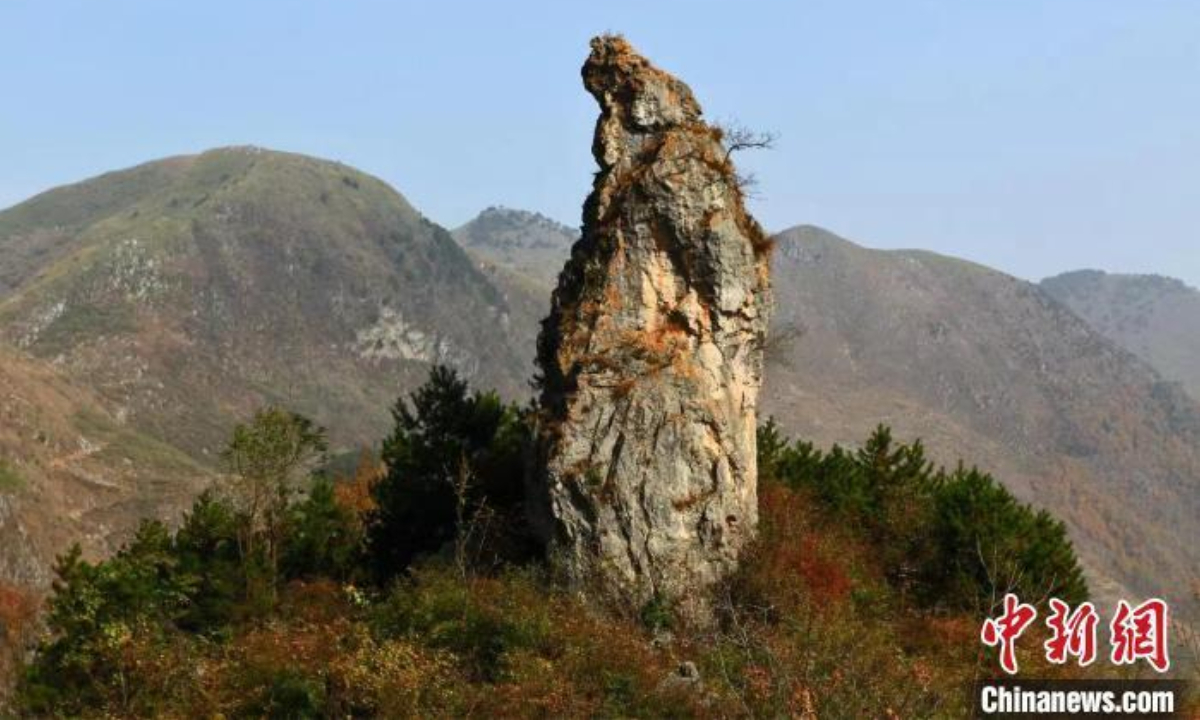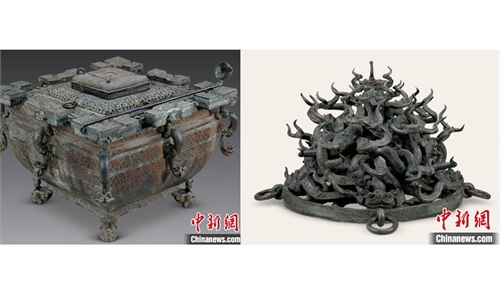ARTS / CULTURE & LEISURE
Column-shaped Karst landscape proof of Qinling landform evolution

A new type of taller and slenderer columnar Karst landscape has been disclosed by Hubei Geological Sciences Research Institute on Wednesday at Kanzi Mountain in Yunxi County, central China's Hubei Province. Photo: China News Service
The discovery of a new type of taller and slenderer columnar Karst landscape has been disclosed by Hubei Geological Sciences Research Institute on Wednesday at Kanzi Mountain in Yunxi County, central China's Hubei Province, according to China News Service.
Zhao Bi, senior engineer at the paleontology research center of the Hubei Institute of Geosciences, noted that the coexistence of two distinctly different forms of surface Karst landscapes in the area provide new crucial evidence for studying the evolution of the Qinling Mountains.
Kanzi Mountain, located at the junction of central China's Hubei Province and Northwest China's Shaanxi Province, is a typical Karst limestone mountain from the Carboniferous period, dating back approximately 359 to 299 million years. With an average elevation exceeding 1500 meters, Kanzi Mountain experiences significant erosion and is one of the key Karst landform areas in the hinterland of the Qinling Mountains.
Karst, also known as limestone topography or erosional landforms, is a type of landscape where the dissolving of the bedrock has created sinkholes, sinking streams, caves, springs, and other characteristic features. The interaction of water with soluble rocks is collectively referred to as Karstification. In general, a typical Karst landscape forms when much of the water falling on the surface interacts with and enters the subsurface through cracks, fractures, and holes that have been dissolved into the bedrock. After traveling underground, sometimes for long distances, this water is then discharged from springs, many of which are cave entrances.
Karst landforms cover approximately 15 percent of the Earth's land. China boasts the largest and most widely distributed Karst area globally, spanning 3.44 million square kilometers, with the southwestern exposed Karst area in Gui-zhou Province being the largest and most concentrated continuous distribution area in the world.
The newly discovered tall columnar Karst landscape at Kanzi Mountain exhibits stark differences from the stone forest monolithic landscape there. Zhao explained that their formation and evolution are not solely influenced by Karstification but are comprehensively controlled by both Karst and gravitational collapse.
Taking an eagle-beak-like stone landscape as an example, Zhao pointed out its pointed top, indicating profound modification due to Karstification. Yet its towering presence and the predominantly straight, orderly fracture surfaces with scattered large boulders around demonstrate it as a geological relic left by substantial rock collapse. These columnar Karst landscapes prominently controlled by gravitational collapse, previously defined as "Chaibuxi-style stone forests", had not been discovered in the adjacent areas of Hubei, Henan, Shaanxi and Chongqing in the hinterland of the Qinling Mountains before this.
This new discovery underscores the varied elevation and different degrees of Karstification occurring across different parts of the mountain under the complex tectonic framework of the Qinling orogenic belt.
"This illustrates the complexity of the geological structure and Karst landscape evolution in the Qinling Mountains, suggesting that the genesis of Karst landscape types may be much richer than previously thought," Zhao concluded.



